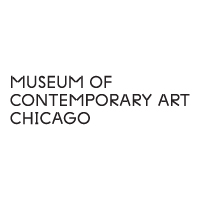Turkey Reopens State Painting and Sculpture Museum
By Emika Suzuki
*updated December 31

The exterior of the Ankara State Painting and Sculpture Museum, which reopened on December 28 after renovations. Image courtesy the Ministry of Culture and Tourism.
The Ankara State Painting and Sculpture Museum, which holds many of the most important modern Turkish artworks, reopened on December 28 following a comprehensive restoration. More than 240 artworks by leading artists of the late Ottoman and early Republican eras, including Osman Hamdi Bey, Şeker Ahmet Pasha, İbrahim Çallı, and Bedri Rahmi Eyüboğlu, are featured in the museum’s galleries. Turkish president Recep Tayyip Erdoğan attended the reopening ceremony.
The revitalization project, conducted by the Ministry of Culture and Tourism with experts from various universities, took one year to complete. Details of the original building, which was completed in 1930, were restored using traditional conservation techniques. The museum has been newly equipped with fireproof features, reinforced against damage from earthquakes, and is protected by a cutting-edge camera and alarm system.
Art historian Kıymet Giray curated the new permanent exhibition, “Masterpieces” from the collection of more than 3,600 works dating from the late 19th century. Famous artworks in the state collection include monumental paintings such as Osman Hamdi Bey’s Arms Merchant (1885) and Emel Korutürk’s Turkish Child Giving Thanks to Atatürk (1933).
Designed by Arif Hikmet Koyunoğlu in 1927 as meeting hall for the nationalist club called the Turkish Hearths, and later transformed into a "people's house" for cultural events, the building itself is a notable example from the first national architectural period of Turkey, combining Ottoman and Selcuk styles into modern buildings for the country’s new capital. It was officially allocated to the Ministry General Directorate of Fine Arts in 1975 to be used as a museum of painting and sculpture, which opened in 1980.
The Ankara State Painting and Sculpture Museum has been mired in scandal for more than a decade, after a 2009 review of its collection uncovered many forgeries. Subsequent investigations revealed that a network of art dealers and businessmen, along with the museum’s security director and other employees, had stolen 302 works—valued at more than USD 250 million— from the collection in the years 2005–08 and replaced the originals with replicas created by students at an art academy in Crimea.
Meanwhile the future of the Istanbul Museum of Painting and Sculpture, overseen by Mimar Sinan Fine Arts University, remains uncertain after its curatorial team quit the project earlier in 2020, citing a lack of funding, inadequate resources and staff, and that many of the national collection's most crucial works are on loan to the private residences of the Turkish president.
To celebrate the reopening of the museum, a concert featuring a performance of Kemanî Tatyos Efendi’s maqam, Mâni Oluluk Hâlimi Takrîre Hicâbım, which was loved by the founder of the Republic of Turkey, Mustafa Kemal Atatürk, will be held in the building's theater.
Emika Suzuki is an editorial intern of ArtAsiaPacific.
To read more of ArtAsiaPacific’s articles, visit our Digital Library.







